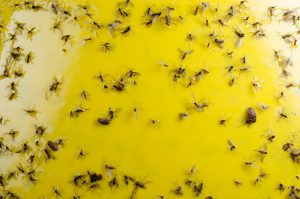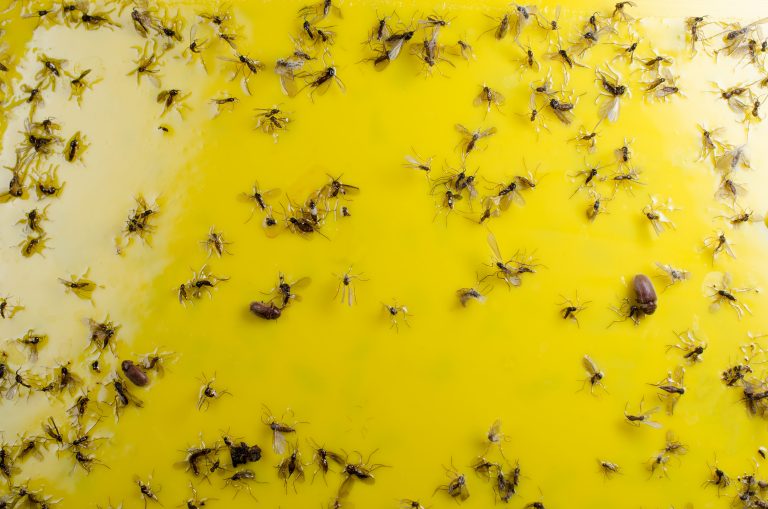Pest
Fungus gnats

| Überblick | |
|---|---|
| Latin name | Sciaridae |
| Host Plants | Ornamental and vegetable plants, especially in greenhouses and potted plants |
| Appearance |
Thin, black mosquitoes, 1-7 mm in size, with black wings; Larvae: thin, 6-7 mm long, glassy white with black head capsule |
| Time of Infestation | all year round |

- Damage
- Evolution of the Pest
- Infestation Control
The larvae of the fungus gnat develop very quickly in damp soil. In case of excessive infestation they can cause damage, as they feed on the roots and parts of the plants. Older plants are disturbed in their growth, young plants can even die. Although the adults themselves do not cause any damage, they can become a nuisance in the indoor plant area. They usually first attract attention, as they fly up en masse when plants are watered.
The females of the fungus gnat, that dance slightly during the flight, lay up to 200 eggs into the damp soil and die after approximately 3-7 days. After approximately one week, the larvae hatch, start feeding and pupate after 14 days in the soil. Only a few days later the new generation of gnats start flying.
The annoying adult fungus gnats can be captured with yellow boards, for example. The larvae of the fungus gnats can be fought with an insecticide in a watering process.
Control of fungus gnats with the ecological plant protection product NeemAzal®-T/S
To control fungus gnat larvae, NeemAzal®-T/S can be applied by watering at the onset of infestation. For this purpose, mix 15 ml NeemAzal®-T/S with 3 L water (for 1 m²). For one hectare, mix 1.5 L NeemAzal®-T/S with 300 L water.
NeemAzal®-T/S can be obtained from specialist crop protection retailers. Please contact our distribution partners. A certificate of competence is required.
You can obtain our natural insecticide for use in home and home gardening under the brand names of our partners in many garden centers and specialist stores. Find more information here. hier.